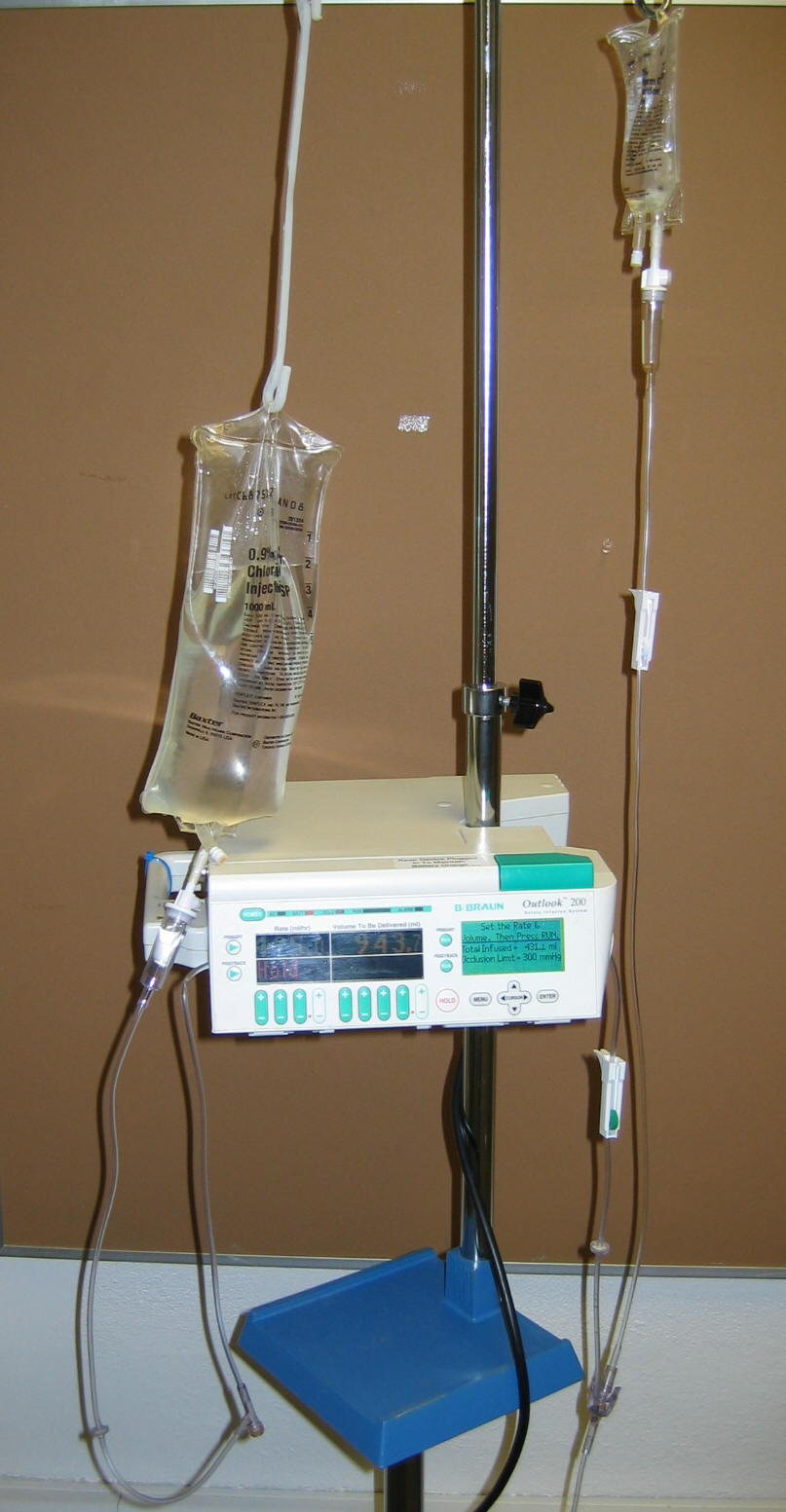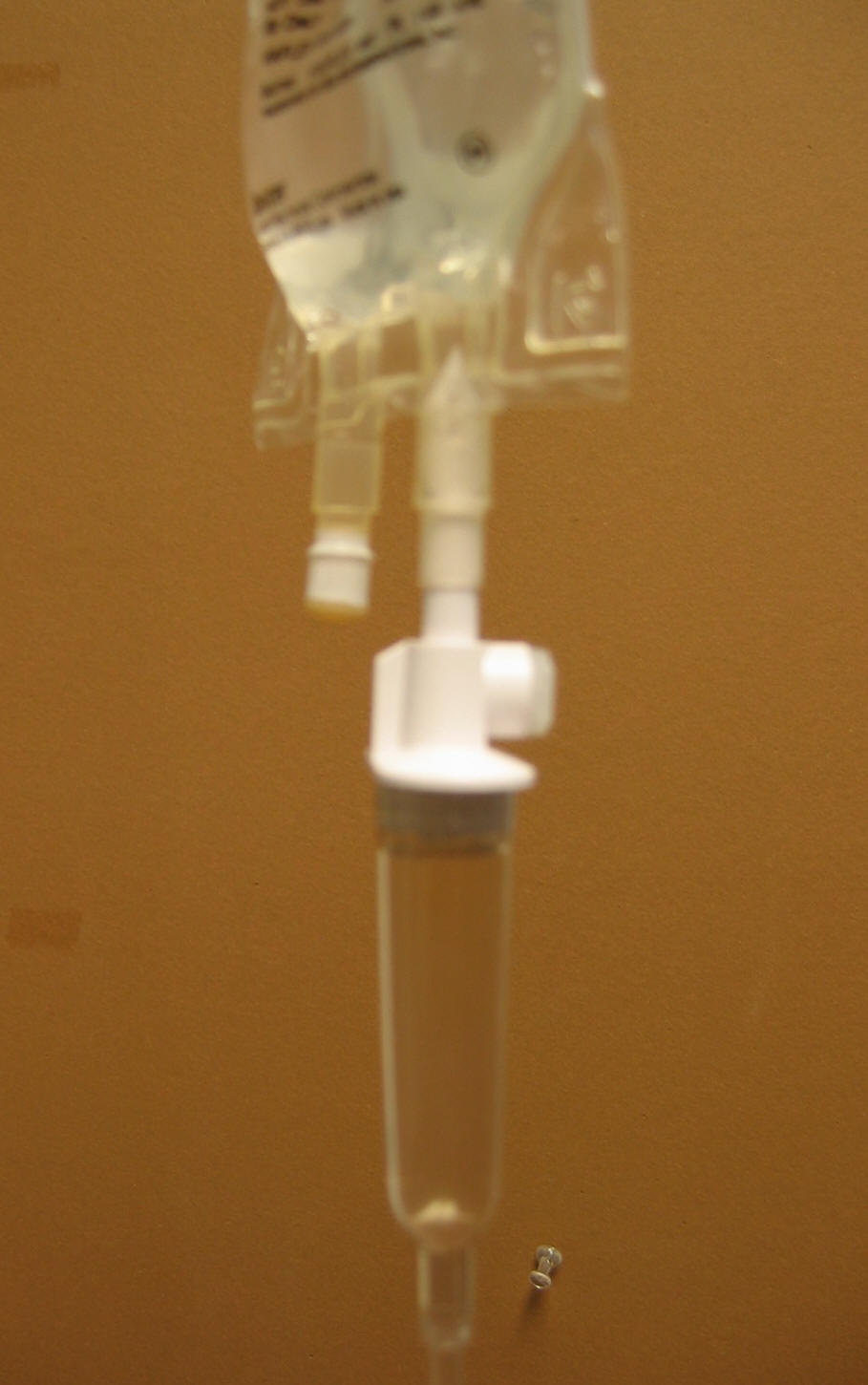|
Critical
Thinking:
Part 3 |
|
|
|
|
|
Critical Thinking/Application Questions:
Print off an answer sheet and record your answers for each of the Parts.
When you have completed a Part go to the Answer Page and check your results
and review the explanations given. |
|
Part 3: Question 3
The nurse is preparing to
administer medication via IV Piggyback. You enter the room to
see the following set up. What is wrong with this picture?
A. The pump is set to the wrong
rate
B. The primary and IVPB bags
are at the wrong heights
C. There is air in the line
D. The IVPB line is connected
below the pump
|
 |
Part 3: Question 4
The nurse has finished administering IV
Ketorolac through a patient's saline lock. It is important for the
nurse to then immediately:
A. Turn the pump back on
B. Re-establish the lock
Part 3: Question 6
The nurse needs to infuse a medication
that can sometimes cause stinging when it is injected. What is the
best action for the nurse?
A. Dilute the medication (if it is safe
for this medication)
B. Call the Pharmacist for a different
medication with similar properties to be given
C. Infuse the medication at the port
closest to the insertion site
D. Pre-medicate the patient for pain
Part 3: Question 5
As you are completing your focused
assessment, you note that there is blood in the tubing of the IV near the
insertion site. You should (SELECT ALL THAT APPLY):
A. Assess for infiltration
B. Discontinue the IV
C. Flush at the closet port with 2-3cc
normal saline to determine patency
D. Call the physician
C. Massage the IV site
D. Assess the patient's pain level
Part 3: Question 2
You have a new order to administer
Lasix 20mg IV. The vial you have contains 50mg/10cc of Lasix. How many
cc's should you draw up?
Dose=_____________
Part 3: Question 1
The nurse has drawn up two
syringes of medications for the patients that occupy Bed 1 and Bed 2. She
gets a telephone call and returns back to the medication administration for
her patients and realizes that she can't remember which syringe is for which
patient. Which of the following would be her best course of action?
A. Make an educated guess as to which
syringe is which
B. Dispose of both and call the
Pharmacy for new doses
C. Chart that a medication error was
made and skip the dose
D. Apply a label to the medications and
administer them
Part 3: Question 8
A patient with nausea has an order for
25mg of IV Dramamine to be injected into their current IV fluids. After
injecting the medication, it is important for the nurse to: (SELECT ALL THAT
APPLY)
A. Chart that medication was given
B. Label the bag with the med, RN
initials, dose, date, time and expiration
C. Increase the rate of the primary IV
fluids to get all of the medication in
D. Re-evaluate medication effectiveness
in 10 minutes
Part 3: Question 7
You need to administer a medication by
IV push over a period of 5 minutes. What is the best way to do this?
A. Push the medication and then stay
with the patient for 5 minutes
B. Give the dose in small increments
over a period of 5 minutes (i.e. give 0.2 cc doses every minute for a 1cc
total dose)
C. Instruct the patient to push the
plunger a small amount every 10 seconds
D. Call to have the medication injected
into an IVPB solution for easier administration
| Part 3:
Question 9
The nurse is verifying that the
IVPB that they have started is actually running. What is wrong with
the item pictured?
A. There are air bubbles in the
line
B. The spike for the line is
not fully into the bag
C. The drip chamber is full of
fluid
D. The incorrect type of tubing
has been attached
|
 |
Answer Page
Part 3: Question 10
You are caring for a child that recently
returned from surgery and is crying and groggy. The parent asks why the arm
with the IV is wrapped in bandages and has a restraint on it. Your response
should be:
A. This will help
prevent the child from pulling of their dressing
B. A skin tear occurred on their arm
during the surgery
C. Their IV is
infiltrated so this acts as a pressure dressing
D. This helps prevent them from pulling
out their IV

